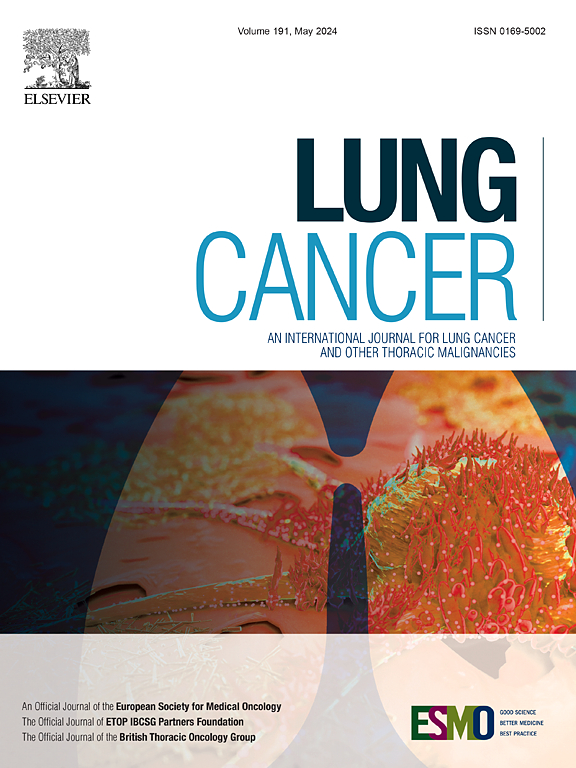将肿瘤宏观环境、微环境和力学生物学与类器官和器官芯片模型相结合,用于肺癌免疫治疗
IF 4.4
2区 医学
Q1 ONCOLOGY
引用次数: 0
摘要
肺癌仍然是癌症相关死亡的主要原因,免疫检查点抑制剂(ICIs)已经彻底改变了其治疗方法。然而,患者之间的免疫治疗反应差异很大,免疫相关肺炎等不良反应构成了临床挑战。肿瘤宏观环境(TMaE)和肿瘤微环境(TME)在调节免疫治疗结果中起关键作用;然而,它们之间复杂的串扰仍然没有得到充分的表征。这篇综述讨论了系统(宏观环境)因素,包括宿主代谢状态、共存的肺部疾病和基线免疫能力,以及肿瘤内在(微环境)决定因素,如程序性死亡配体1 (PD-L1)表达、肿瘤突变负担(TMB)和免疫细胞浸润。此外,我们强调了机械转导途径,包括YAP/TAZ信号,细胞外基质(ECM)刚度和机械应力,在免疫逃避中的作用,表明它们有潜力成为新的治疗靶点。最后,我们探索新兴的临床前模型,模拟TME和TMaE,利用肺癌衍生的类器官和器官芯片平台进行免疫治疗反应和安全性评估。更深入地了解TMaE和TME之间的相互作用,结合先进的建模方法,可能最终为肺癌患者带来更精确和个性化的免疫治疗策略。本文章由计算机程序翻译,如有差异,请以英文原文为准。
Integrating tumor macroenvironment, microenvironment and mechanobiology with organoid and organ-on-a-chip models for lung cancer immunotherapy
Lung cancer remains the leading cause of cancer-related mortality, and immune checkpoint inhibitors (ICIs) have revolutionized its treatment. However, immunotherapy responses vary significantly among patients, and adverse effects, such as immune-related pneumonitis, pose clinical challenges. Both the tumor macroenvironment (TMaE) and tumor microenvironment (TME) play pivotal roles in modulating immunotherapy outcomes; however, the complex crosstalk between them remains insufficiently characterized. This review discusses systemic (macroenvironmental) factors, including host metabolic status, coexisting pulmonary diseases, and baseline immune competence, alongside tumor-intrinsic (microenvironmental) determinants, such as programmed death-ligand 1 (PD-L1) expression, tumor mutation burden (TMB), and immune cell infiltration. Furthermore, we highlight the role of mechanotransduction pathways, including YAP/TAZ signaling, extracellular matrix (ECM) stiffness, and mechanical stress, in immune evasion, suggesting their potential as novel therapeutic targets. Finally, we explore emerging preclinical models simulating the TME and TMaE for immunotherapy response and safety assessment using lung cancer-derived organoids and organ-on-a-chip platforms. A deeper understanding of the interplay between TMaE and TME, combined with advanced modeling approaches, may ultimately lead to more precise and personalized immunotherapy strategies for patients with lung cancer.
求助全文
通过发布文献求助,成功后即可免费获取论文全文。
去求助
来源期刊

Lung Cancer
医学-呼吸系统
CiteScore
9.40
自引率
3.80%
发文量
407
审稿时长
25 days
期刊介绍:
Lung Cancer is an international publication covering the clinical, translational and basic science of malignancies of the lung and chest region.Original research articles, early reports, review articles, editorials and correspondence covering the prevention, epidemiology and etiology, basic biology, pathology, clinical assessment, surgery, chemotherapy, radiotherapy, combined treatment modalities, other treatment modalities and outcomes of lung cancer are welcome.
 求助内容:
求助内容: 应助结果提醒方式:
应助结果提醒方式:


